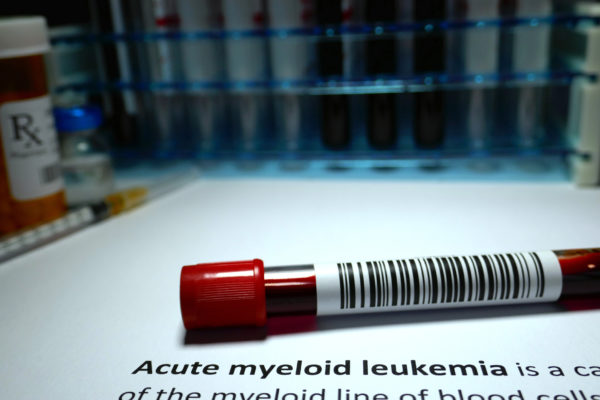
Older patients with relapsed or refractory AML (RR AML) have a poor prognosis. Haematopoietic cell transplantation (alloHCT) is potentially curative. However, due to poor tolerance for intensive myeloablative regimens of this population, alloHCT is typically not offered to older patients. There is a need for novel conditioning regimens to improve feasibility and outcomes of alloHCT in older patients with RR AML. The randomised phase III SIERRA trial investigated whether a targeted pretransplant regimen with the anti-CD45 radioconjugate 131I-apamistamab could address this unmet need.
Study Design
RR AML patients ≥55 years with active RR AML received either a pretransplant regimen with 131I-apamistamab followed by alloHCT, or conventional care followed by alloHCT in case of achieving initial complete remission (CR) or CR with incomplete platelet recovery (CRp). Patients receiving conventional therapy were allowed to crossover to 131I-apamistamab, if they did not reach CR/CRp or showed AML progression. Primary endpoint was durable complete remission (dCR), which was defined as CR/CRp lasting ≥180 days after initial CR/CRp. Secondary endpoints were overall survival (OS) and event-free survival (EFS).
Results
Median age of patients in the intention-to-treat (ITT) population (N= 153) was 65 years (range, 55-77). CR/CRp occurred in 46 of 76 (60.5%) patients in the 131I-apamistamab group after allo-HCT versus 5 of 77 (6.5%) patients in the conventional care group after salvage therapy. The dCR rate was significantly higher the 131I-apamistamab group versus the conventional care group) (17.1% vs 0%, p< 0.001). Of the 62 patients in the conventional care group that did not respond, 44 crossed over, of whom 40 received 131I-apamistamab and underwent allo-HCT. These patients had similar responses compared to those who were originally in the 131I-apamistamab group: CR/CRp and dCR in the crossover group was 52.3% and 13.6% respectively.
Median OS was similar between 131I-apamistamab-treated patients and those receiving conventional care after salvage therapy at both the primary cutoff (median 6.4 vs 6.0 months, hazard ratio [HR], 0.99, p= 0.96) and the subsequent analysis (median 6.3 vs 5.9 months, HR, 0.91, p= 0.59). EFS was longer in the 131I-apamistamab group compared to the conventional care group (HR, 0.23; p< 0.0001). Treatment groups had similar safety outcomes, grade 3 treatment-related adverse events occurred in 59.7% of patients in the 131I-apamistamab arm versus 59.2% in the conventional care groups.
Conclusion
Adding 131I-apamistamab to the transplant regimen in older patients with RR AML improved the dCR rate compared to conventional therapy. In addition, the 131I-apamistamab-led regimen was well tolerated and had a similar safety profile compared to conventional therapy. OS between treatment arms was similar, however this may have been confounded by the high cross-over rate in the conventional therapy arm. The promising results of this study warrants additional investigation in the potential role of 131I-apamistamab-led regimens in improving transplant outcomes in older patients with AML.
Reference